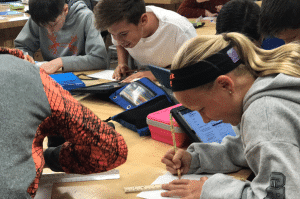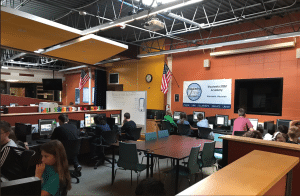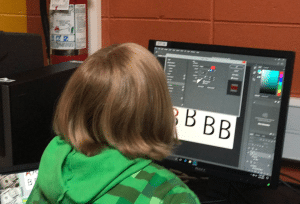What if We Started Looking at STEM-Education Differently?
CompetencyWorks Blog
 STEM is all the rage these days, and with an ever-growing gap in filling jobs that are tied to science, technology, engineering, and math, employers are at a loss with finding well-rounded, educated, and professional employees to hire. What if STEM-Education began to be viewed as more than just science, technology, engineering, and math, though? What if the STEM programs which are slowly emerging in schools across our country started working with our youth at a young age and became something greater, something that helped develop successful, collaborative, creative, and innovative thinkers who could actually apply their knowledge? What could this possibly look like, and what might the benefits be for our workforce and, more importantly, our future?
STEM is all the rage these days, and with an ever-growing gap in filling jobs that are tied to science, technology, engineering, and math, employers are at a loss with finding well-rounded, educated, and professional employees to hire. What if STEM-Education began to be viewed as more than just science, technology, engineering, and math, though? What if the STEM programs which are slowly emerging in schools across our country started working with our youth at a young age and became something greater, something that helped develop successful, collaborative, creative, and innovative thinkers who could actually apply their knowledge? What could this possibly look like, and what might the benefits be for our workforce and, more importantly, our future?
A concept that has resonated with me for years has been one of students wanting to advance through “curriculum” as quickly as possible. Mastery never seemed to be the goal for these students and sometimes parents, but really, how fast the student could advance through a program, or ace a test… just to show that they knew how to solve the problems and get some high school credits. The issue, however, was when you asked them what the answers actually meant… as in, “What are you actually telling me?” Blank stares and a response of, “Well, the answer is 22.5432432….” were quite often the conversations hastily exchanged across the table. Were we really helping our students grow as learners and, more importantly, as college and career citizens who were ready to be sprung out into our ever-changing world? It was at this point that the shift from masters of content began to transition into helping to foster experts in context.
 What if we flipped the script and started to look at STEM differently? What if instead of simply thinking that students needed to master concepts, they became experts in context in the areas of science, technology, engineering, and math, and actually began to embrace STEM as “Strategies That Engage Minds” or even better yet “Solving Today’s Everyday Mysteries.” Students were now becoming real-life, rational problem-solvers instead of solving a problem solely to show the answer. When asked how something worked or why it didn’t work, a student could now articulate the Why, instead of just defend the What.
What if we flipped the script and started to look at STEM differently? What if instead of simply thinking that students needed to master concepts, they became experts in context in the areas of science, technology, engineering, and math, and actually began to embrace STEM as “Strategies That Engage Minds” or even better yet “Solving Today’s Everyday Mysteries.” Students were now becoming real-life, rational problem-solvers instead of solving a problem solely to show the answer. When asked how something worked or why it didn’t work, a student could now articulate the Why, instead of just defend the What.
 When we look at the key factors that our employers are searching for in the up-and-coming workforce today, it isn’t a robotic crew of employees who can regurgitate the same data and facts over and over again, but, more importantly, innovators who are able to think on the fly and find solutions to problems that we don’t even know exist yet. This is similar to the newer view on our educational system that the sole purpose of teaching should not be to teach our students about anything and everything that has happened in the past, but rather, to help them understand the future and shift our focus onto the how and why things occur and how and why there is a critical need to improve upon today’s concepts, products, and solutions to increase efficiency and help support a healthier and more sustainable planet. When you move people from thinking about gradually releasing responsibility to gradually shifting their disposition, you have found the recipe for engagement. You have found the recipe for success.
When we look at the key factors that our employers are searching for in the up-and-coming workforce today, it isn’t a robotic crew of employees who can regurgitate the same data and facts over and over again, but, more importantly, innovators who are able to think on the fly and find solutions to problems that we don’t even know exist yet. This is similar to the newer view on our educational system that the sole purpose of teaching should not be to teach our students about anything and everything that has happened in the past, but rather, to help them understand the future and shift our focus onto the how and why things occur and how and why there is a critical need to improve upon today’s concepts, products, and solutions to increase efficiency and help support a healthier and more sustainable planet. When you move people from thinking about gradually releasing responsibility to gradually shifting their disposition, you have found the recipe for engagement. You have found the recipe for success.
See also:
- Iteration in Action: The Urban Assembly Maker Academy
- Congratulations Are in Order
- The Importance of Competency-Based Learning in a Personalized Learning Environment
James Murray is principal of Waukesha STEM Academy and was named 2017’s Wisconsin Principal of the Year.